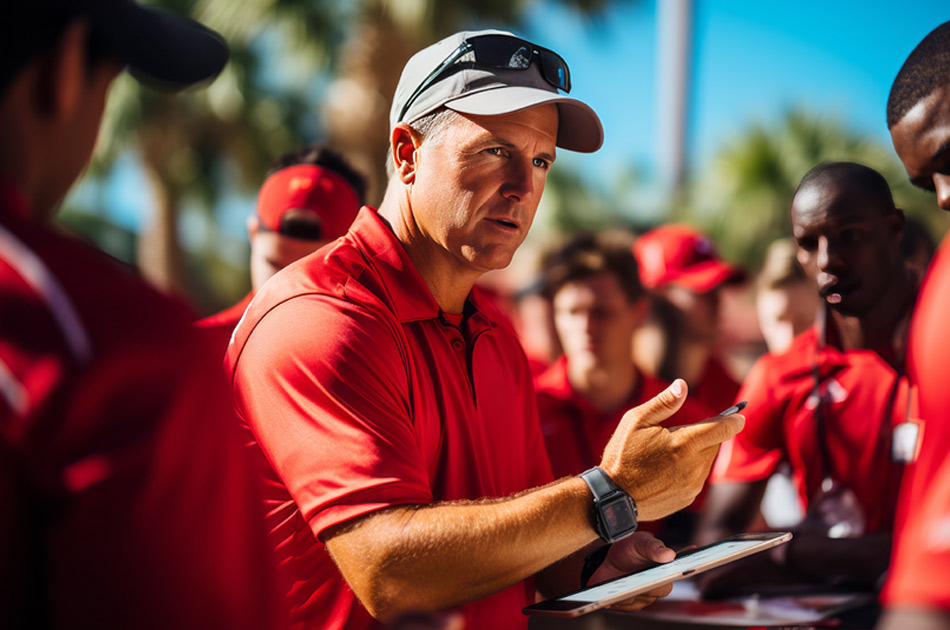For high school athletic directors, the role extends beyond managing teams and organizing events. It involves creating a vibrant community where students, parents, coaches, and local supporters are in sync, rallying around the spirit of high school athletics. Effective communication is the cornerstone of this engagement, serving not just to inform but to unite.
Creating A Unified Vision
Athletic directors are tasked with crafting a vision that resonates across the board. This vision should encapsulate the values of teamwork, resilience, and sportsmanship, which are fundamental to the athletic experience. By consistently communicating this vision, directors ensure that all stakeholders share a common goal: to support and celebrate the development of student-athletes.
In developing this vision, athletic directors engage in a multifaceted dialogue with coaches, parents, and the athletes themselves, ensuring the ethos of teamwork, resilience, and sportsmanship is woven into every aspect of the athletic program. This involves setting clear expectations for conduct during games, fostering a culture where perseverance is praised as highly as performance, and celebrating acts of sportsmanship as victories in their own right.
Communication Through Storytelling
One of the most powerful tools at an athletic director’s disposal is storytelling. Highlighting the achievements, challenges, and journey of teams and individual athletes can captivate and inspire the community. Sharing stories through various media – newsletters, social media posts, or school announcements – fosters a deeper connection and personal investment in the athletic program.
Storytelling, in the realm of high school athletics, goes beyond mere recounting of wins and losses; it delves into the heart and soul of the sports community. When athletic directors share stories of an athlete who bounced back from an injury with determination, or a team that pulled together to support a local cause, they illuminate the character and values behind the jersey. These narratives can be particularly impactful when shared through engaging formats like video interviews, photo essays, or feature articles in the school’s digital platforms.
Feedback And Inclusion
Building a community around high school sports means listening to and incorporating feedback from all stakeholders. This could mean conducting surveys among parents to gauge their satisfaction with the sports programs, hosting forums where students can voice their needs and aspirations, or involving community members in decision-making processes. This inclusive communication approach not only enriches the athletic program but also reinforces the community’s role in its success.
In fostering a community-centric athletic program, the role of active listening and feedback integration is paramount. By employing digital platforms for surveys, athletic directors can gather insights with ease, tailoring programs to meet the evolving needs and expectations of their audience. Student-led forums offer a platform for young athletes to express their views, fostering a sense of ownership and involvement in the sports culture. Engaging community members in advisory capacities further democratizes the decision-making process, ensuring that the athletic program not only serves the interests of its immediate stakeholders but also contributes positively to the local community ethos.
Transparency In Operations
Athletic directors must navigate the complexities of scheduling, budgeting, and compliance. Transparent communication regarding these aspects builds trust and understanding. For instance, clear explanations of how funds are allocated or the rationale behind scheduling decisions can preempt misunderstandings and foster a supportive environment.
Athletic directors’ transparency in discussing scheduling, budgeting, and compliance nuances fosters a trust-based community. By openly sharing how budgets are managed or why certain games are scheduled, they demystify the operational side of sports programs. This approach not only educates but also involves stakeholders in a dialogue, paving the way for a collaborative atmosphere. Such clarity ensures that everyone, from parents to athletes, feels aligned with the program’s objectives, reinforcing a culture of mutual support and respect.
Celebrating Successes and Addressing Challenges
Finally, a candid approach to both successes and challenges is crucial. Celebrating victories, big and small, instills pride and motivation. Similarly, openly addressing setbacks or challenges demonstrates a commitment to growth and improvement. This balanced communication ensures that the community feels involved and valued throughout the highs and lows of the athletic journey.
Embracing transparency, athletic directors celebrate achievements and confront challenges head-on, creating an environment of trust and engagement. Acknowledging every victory fosters pride, while candidly discussing setbacks highlights a dedication to learning and growth. This balanced approach makes the sports community feel integral to the program’s journey, ensuring they remain supportive and connected, whether in moments of triumph or adversity. Such openness nurtures a culture where every participant feels seen, heard, and valued.










